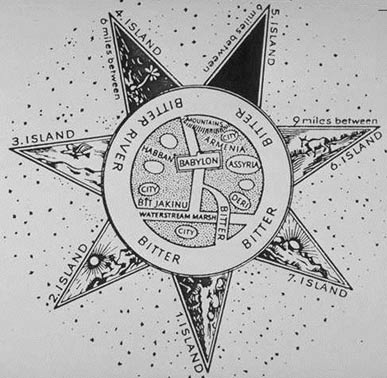My personal interpretation of the Biblical flood, which I believe is supported by archaeology and the Bible:
Virtually all scholars I know claim that there is a link between the Genesis flood and the Atrahasis/Gilgamesh flood. The King of Shurrupak, Ziasudra, or Atrahasis received a revelation from the deity Ea warning him that the gods would send a deluge to wipe mankind from the face of the earth. Archaeology has shown that a major flood did indeed happen in the area around Shurrupak around approx 2900 BC, which is by no coincidence, exactly when the Sumerians claimed it happened, if we calculate the genealogies in the Sumerian King List, given the links between Genesis and the Atrahasis/Ziasudra epic, I am left in no doubt that this is the Biblical flood.
But wait, doesn’t the Bible say that ‘the whole earth’ was destroyed?
Well, this is what ‘the whole earth’ meant in ancient Mesopotamia:

Notice the complete lack of reference to Egypt, Meluhha (India), Canaan and the all the other lands which the Mesopotamians knew full well existed?
The point being is that in a Mesopotamian context (where the biblical flood story likely originated, either patriarchal or exilic), the phrase ‘the whole earth’, was often not meant literally, this is also shown in how Mesopotamian rulers such as Sargon, Ashurbanipal and (as I shall get on to) Nebuchadnezzar were described as ruling the whole earth, ‘from the upper sea to the lower sea’. Evidently this was not restricted to Mesopotamia either, since Cyrus was said to rule the four corners of the earth. But, wait, wouldn’t God know better?
Well if it is acknowledged that God was speaking to Ancient people in their language, where this would hardly be incorrect usage, then the notion of inerrancy needn’t be compromised, as Walton would say, the Bible was written for us, not too us. Note too, that Daniel claims in Daniel 4 that Nebuchadnezzar ruled to the ends of the earth, so evidently God saw no issue with communicating to Mesopotamians using their geographic terminology.
For more information read these articles by the NCSE and Jon Garvey:
https://ncse.com/cej/8/2/flood-mesopotamian-archaeological-evidence